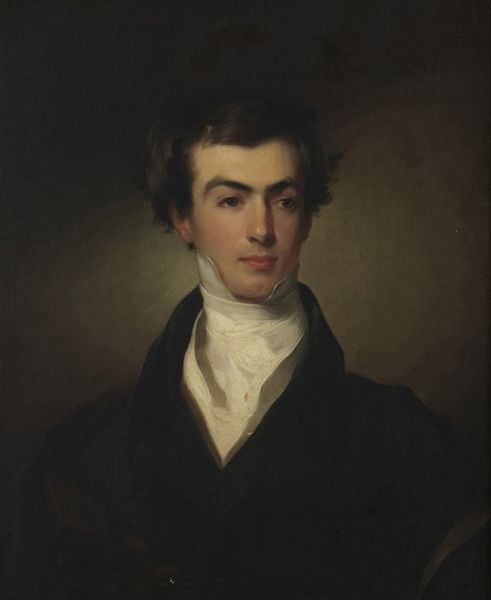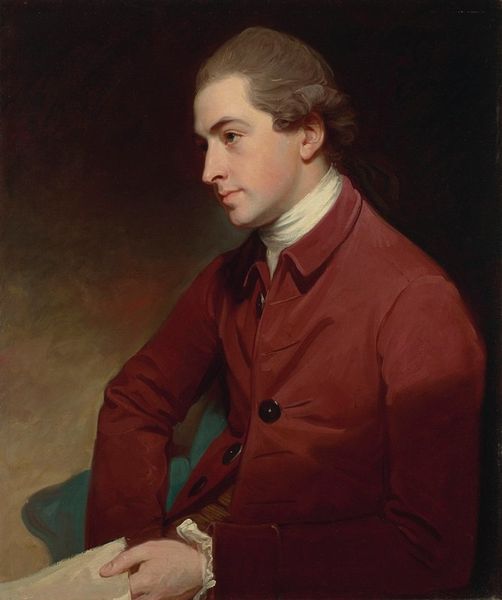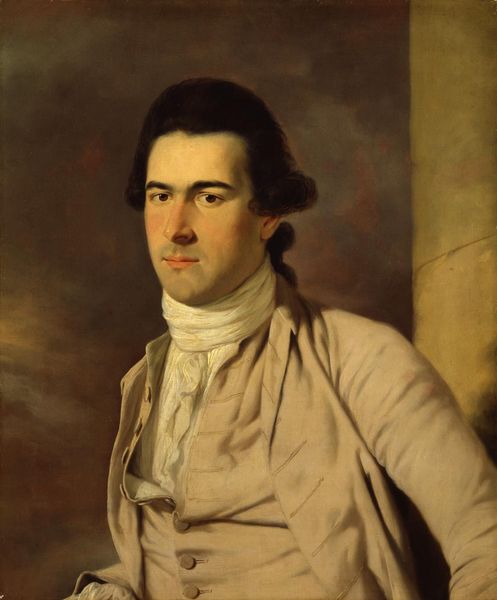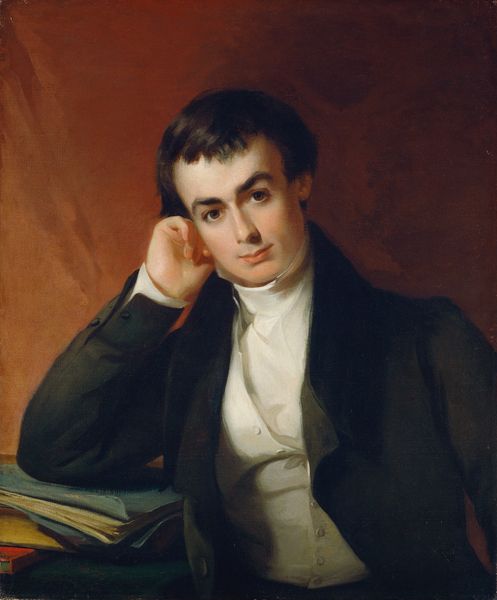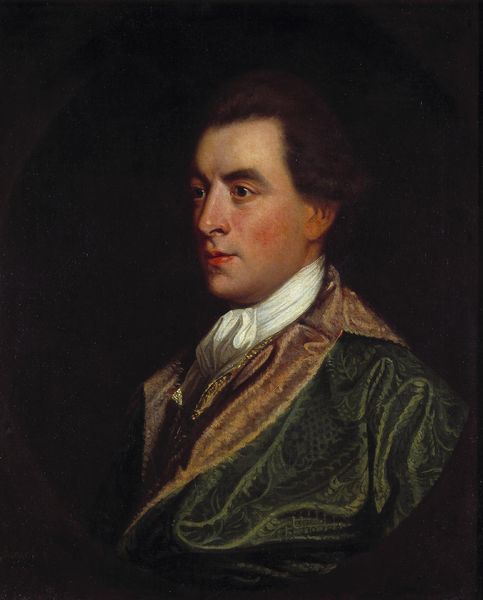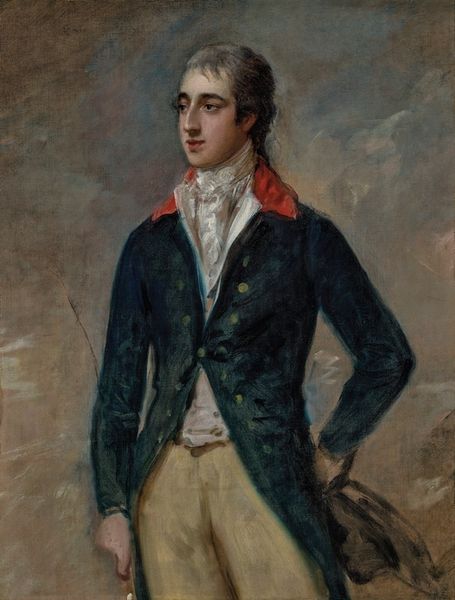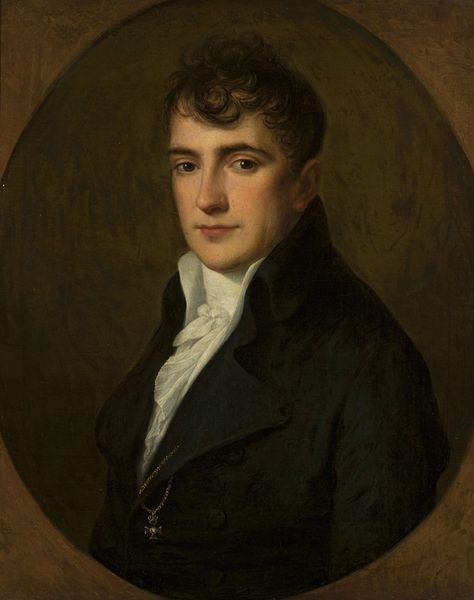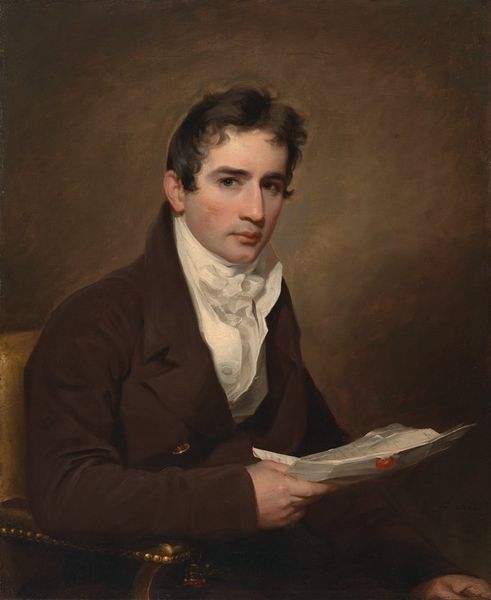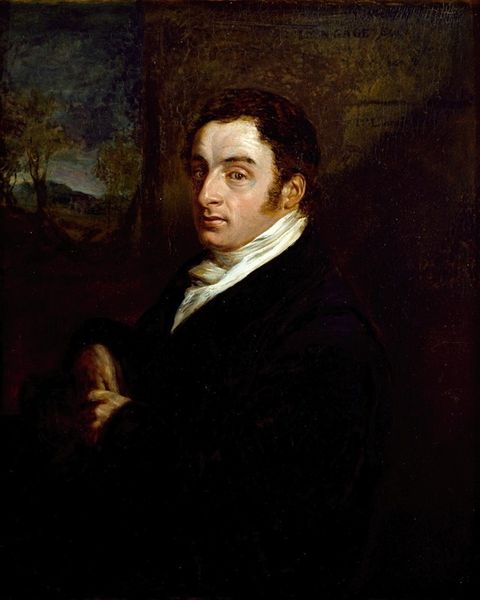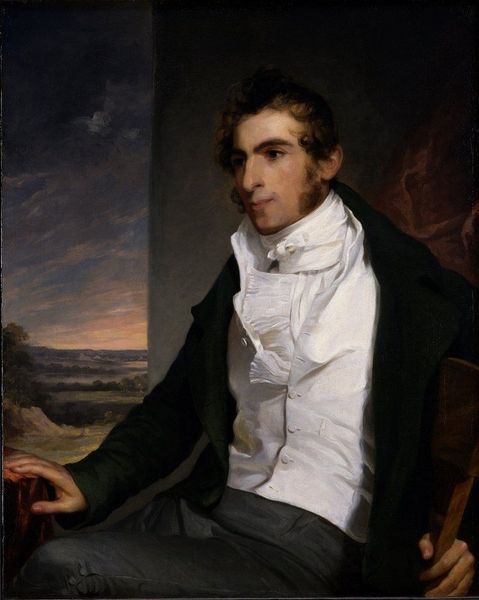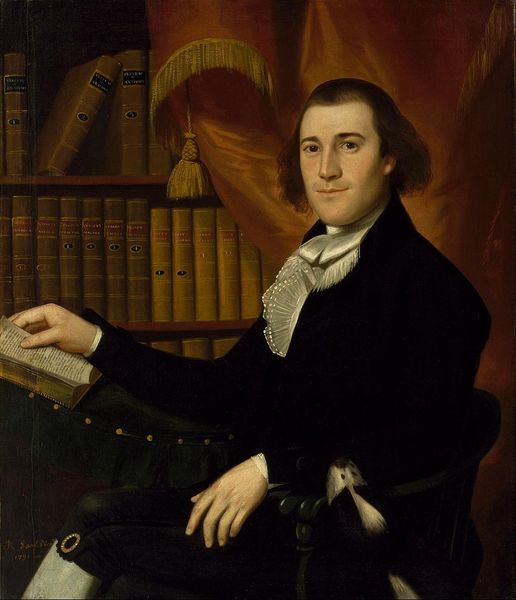
painting, oil-paint
#
portrait
#
figurative
#
neoclacissism
#
painting
#
oil-paint
#
history-painting
#
academic-art
Copyright: Public Domain: Artvee
Editor: We're looking at "A Portrait of John Grey," painted by Benjamin West in 1766, using oil paints. The man is holding a quill and gazing pensively into the distance. It evokes a sense of thoughtful intellect, wouldn’t you say? What do you see in this piece? Curator: Absolutely. The gaze carries so much weight. He's not just looking outward; the entire composition leads me to believe he is considering weighty affairs. His hand holds a quill; poised and ready. Not casually, mind you, but deliberately. A symbol of power during this time; those who wielded the quill, often shaped narratives and changed history. Editor: That’s interesting. I hadn’t considered the quill as such a deliberate symbol of authority. Curator: Consider, also, the restrained color palette—browns and creams--it lends the scene an air of dignified purpose. Notice how the subject's posture reinforces that. Is it casual or forced? The artist wanted to reveal intellect, certainly, but in what way? There are clear symbolic choices here. Editor: Yes, his upright posture does seem very deliberate. And I agree about the colors—they aren't vibrant or flashy, but reserved and thoughtful. The overall tone carries across the painting and suggests restraint in the individual, a kind of stoicism? Curator: Precisely! That's the cultural memory Neoclassicism evokes - Roman stoicism! It sought to visually convey particular social values. We are meant to ponder what his next stroke of the pen might produce. Editor: It's fascinating how much is communicated through these visual cues! I’m left pondering all that symbolism. Curator: Indeed! Recognizing these recurring visual motifs allows us to unpack even more layers of historical context in artworks like these.
Comments
No comments
Be the first to comment and join the conversation on the ultimate creative platform.
